Japanese Dodder Eradication Project
Jappanese dodder (Cuscuta spp.) is a yellow-green, twining, spaghetti-like parasite. It is highly invasive and has a wide host range. Being a parasite, it lives on the nutrients of the host plant.
Negative Impact and Importance of Eradication
Dodder produces structures called haustoria which penetrate the host plant’s vascular tissue, extracting water and nutrients. It is an aggressive and destructive weed:
- Dodder can grow up to 6 inches per day.
- Dodder stems extend to nearby plants, creating new infestations.
- Dodder infestations can weaken and kill the host plant. It is believed that dodder is a vector for plant pathogens such as, citrus tristeza, citrus stubborn, and citrus greening disease.
- Plant mass is substantial enough to make it a potential hazard to power lines.
- There is no herbicide treatment for the control of Japanese dodder. At this time, host plant removal and burial at a local dump site is the only method of control. Because dodder can spread through fragmentation the host plants must be wrapped in plastic.
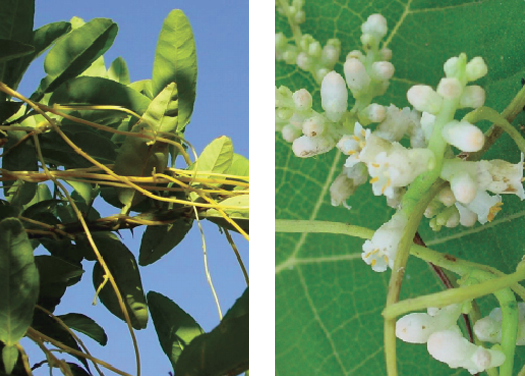
Japanese dodder vine Japanese dodder blossom
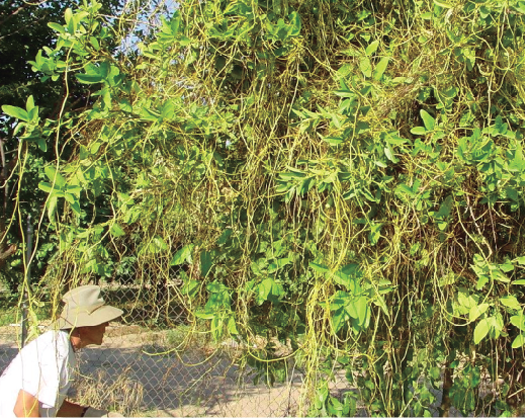
Six-year-old dodder infestation in this citrus tree. The vine has significantly compromised the tree’s health.
Measures to Control Japanese Dodder
Joint efforts are underway by Fresno County Parks and Grounds Division and Department of Agriculture.
Current Measures
The CDFA Japanese Dodder Eradication Program in Fresno County involves:
- Delimitation
- Detection
- Regulatory
- Eradication
- Post-Treatment Monitoring
- Public Outreach and Education
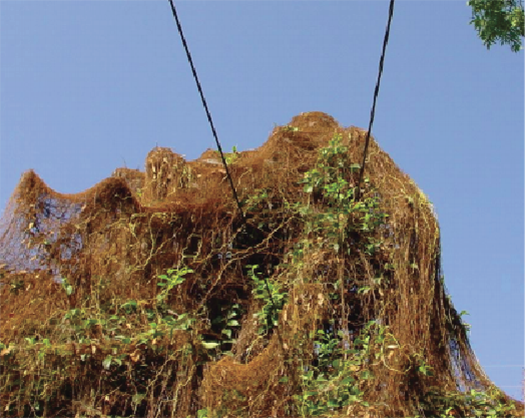
Japanese dodder can become a hazard to power lines.
Delimitation: FCAC staff conducted surveys examining all plants within a 200-meter radius of each property/site where JD was found in 2006.
- During 2007, a delimitation survey was conducted within 14 days of any confirmation of Japanese Dodder.
Detection
- Fresno County Agricultural Commissioner (FCAC) staff will conduct a systematic visual survey of any square mile grid that contained Japanese Dodder (JD).
- Insect pest detection trappers will perform general survey during the normal servicing of the traps.
- All suspected detections reported by the trappers will be followed-up by site and adjacent properties inspections.
Regulatory
- FCAC staff will issue Hold Notices to all infested properties to prevent the unregulated movement of plant material from the site.
- FCAC will issue Compliance Agreements for outside gardeners or landscapers working on infested sites.
Eradication
- FCAC staff will cut out infested parts or remove the entire host pant.
- All plant material will be bagged or wrapped in plastic before being taken to the American Ave Dump.
- FCAC staff will verify the burial of all plant material.
Post-Treatment Monitoring
- FCAC staff will monitor JD sites for two years.
- Eradication will be declared if the post-treatment monitoring is negative one year after treatment.
Public Outreach and Education
- Large and small posters will be distributed to nurseries, large retail outlets, the Big Fresno County fair, community centers, etc.
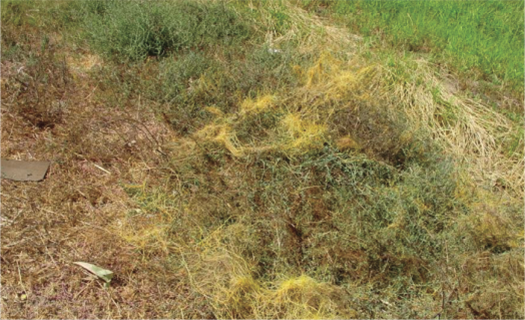
Japanese dodder growing on the ground.
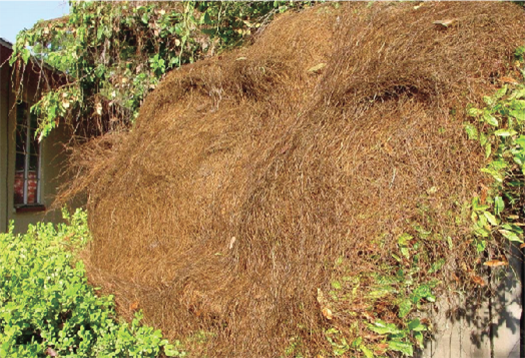
As Japanese Dodder grows, portions die off leaving masses of dead plant material.
Getting rid of Japanese dodder is labor intensive. Early detection is key to minimizing time and expense.
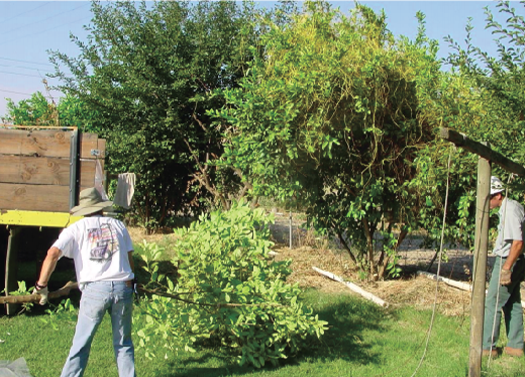
Herbicides are not effective against Japanese Dodder. The Dodder and host plant must be physically removed.
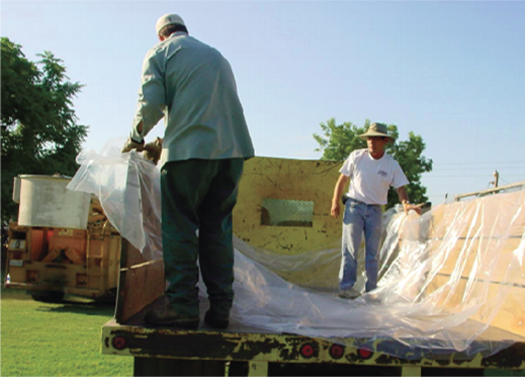
Because plant fragments can initiate a new infestation, even the truck bed has to be lined.
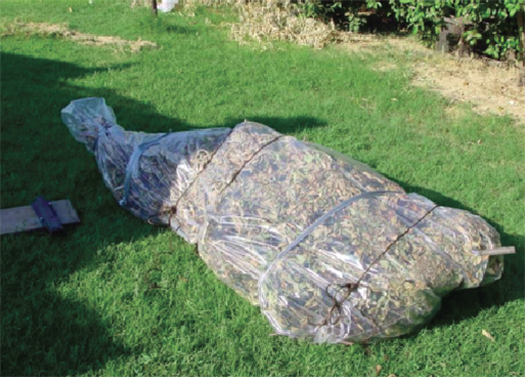
Removed material is sealed in plastic to prevent spread The load is covered. during transport.
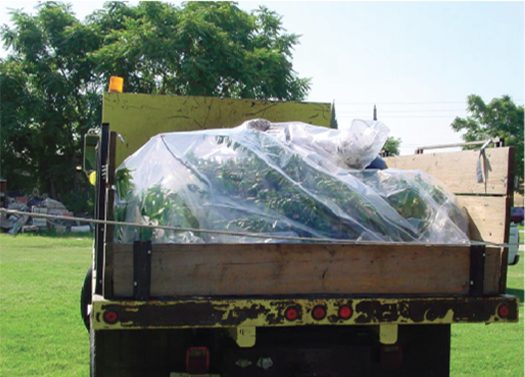
The load is covered.
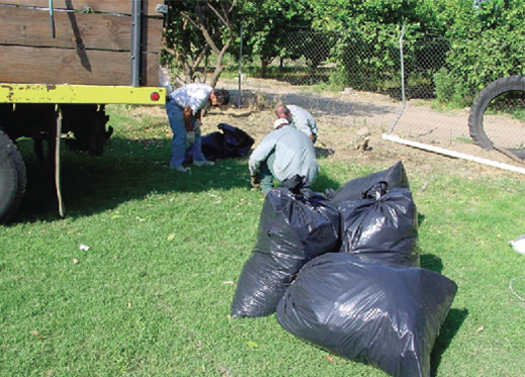
The area is inspected for plant fragments, which are then bagged in plastic.
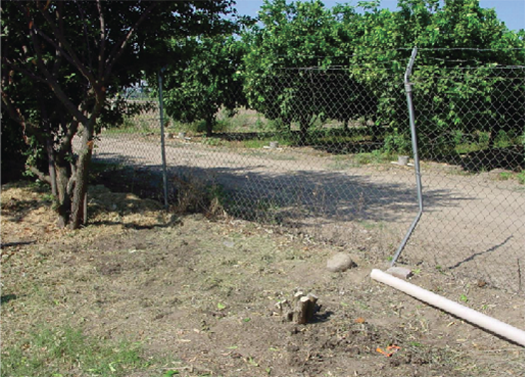
The cleaned site. Eradication is declared if the site is determined clean after one year.
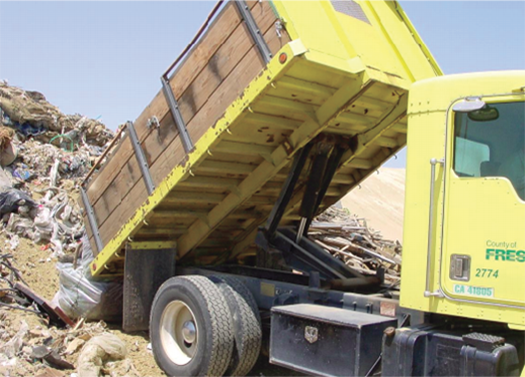
The removed plant material is buried at the American Avenue dump.
If you discover Japanese dodder, please contact:
1720 S. Maple Ave.
Fresno, CA 93702
559-600-7510
Mailing Address
1730 S. Maple Ave.
Fresno CA 93702